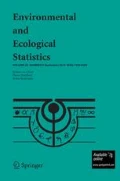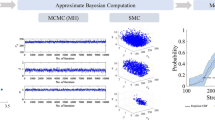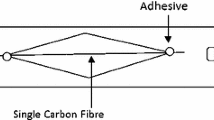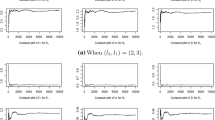Abstract
The procedures to discover proper new models in probability theory for different data collections are highly prevalent these days among the researchers of this area whenever existing literature models are not appropriate. Before delivering a product, manufacturers of raw materials or finished materials must follow some compliance standards in various engineering disciplines to avoid severe losses. Materials of high strength are necessary to ensure the safety of human lives along with infrastructures to elude the significant obligations linked with the provisions of non-compliant products. Using probability theory, we introduce the weighted version of inverted Kumaraswamy Distribution, which could be considered a better model than some other sub-models used to model Carbon fiber’s strength data. We derive various statistical properties of this distribution such as cumulative distribution, moments, mean residual life, reversed residual life functions, moment generating function, characteristic function, harmonic mean, and geometric mean. Parameters are estimated through the maximum likelihood method and ordinary moments. Simulation studies are carried out to illustrate the theoretical results of these two approaches. Furthermore, two real data sets of Carbon fibers strength are utilized to contrast the proposed model and its sub-models like inverted Kumaraswamy distribution and Kumaraswamy Sushila distribution through different goodness of fit criteria such as Akaike Information Criterion (AIC), corrected Akaike information criterion, and the Bayesian Information Criterion (BIC). Results reveal the outperformance of the proposed model compared to other models, which render it a proper interchange of the current sub-models.



Similar content being viewed by others
References
Abd AL-Fattah AM, EL-Helbawy AA, AL-Dayian GR (2017) Inverted Kumaraswamy distribution: properties and estimation. Pak J Stat 33(1):37–61
Abd El-Monsef MME, Ghoneim SAE (2015) The weighted Kumaraswamy distribution. Information 18(8):3289–3300
Badar MG, Priest AM (1982) Statistical aspects of fiber and bundle strength in hybrid composites. In: Hayashi T, Kawata K, Umekawa S (eds) Progress in science and engineering composite. ICCM-IV, Tokyo, pp 1129–1136
Castillo JD, Pérez-Casany M (1998) Weighted Poisson distributions for overdispersion and underdispersion situations. Ann Inst Stat Math 50(3):567–585
Fisher RA (1934) The effects of methods of Ascertainment upon the estimation of frequencies. Ann Eugen 6:13–25
Fletcher SG, Ponnambalam K (1996) Estimation of reservoir yield and storage distribution using moments analysis. J Hydrol 182(1–4):259–275
Ganji A, Ponnambalam K, Khalili D (2006) Grain yield reliability analysis with crop water demand uncertainty. Stoch Environ Res Risk Assess 20(4):259–277
Golizadeh A, Sherazi MA, Moslamanzadeh S (2011) Classical and Bayesian estimation on Kumaraswamy distribution using grouped and ungrouped data under difference of loss functions. J Appl Sci 11(12):2154–2162
Gupta RC, Keating LP (1986) Relations for reliability measures under length-biased sampling. Scand J Stat 13:49–56
Gupta RC, Kirmani SNVA (1990) The role of weighted distributions in stochastic modelling. Commun Stat Theory Methods 19(9):3147–3162
Hussian MA (2013) A weighted inverted exponential distribution. Int J Adv Stat Probab 1(3):142–150
Hussain T, Bakouch HS, Iqbal Z (2018) A new probability model for hydrologic events: properties and applications. J Agric Biol Environ Stat 23(1):63–82
Jing XK (2010) Weighted inverse Weibull and Beta-inverse Weibull distributions. Ph.D. thesis, Statesboro, Georgia
Jones MC (2009) Kumaraswamy’s distribution: a beta-type distribution with some tractability advantages. Stat Methodol 6(1):70–81
Kumaraswamy K, Krishnamurthy N (1980) The acoustic gyrotropic tensor in crystals. Acta Cryst Sect A 36(5):760–762
Lemonte A, Barreto-Souza W, Cordeiro G (2013) The exponentiated Kumaraswamy distribution and its log-transform. Braz J Probab Stat 27:31–53
Mead ME, Afify AZ, Hamedani GG, Ghosh I (2017) The Beta exponential Frechet distribution with applications: properties and applications. Austrain J Stat 46:41–63
Mansour M, Aryal G, Afify, Ahmed Z Ahmad M (2018) The Kumaraswamy exponentiated Frechet distribution. Pak J Stat 3:177–193
Oluyede BO (1999) On inequalities and selection of experiments for length biased distributions. Probab Eng Inf Sci 13:169–185
Patil GP, Rao CR (1978) Weighted distributions and size biased sampling with applications to wildlife populations and human families. Biometrics 34:179–189
Ponnambalam K, Seifi A, Vlach J (2001) Probabilistic design of systems with general distributions of parameters. Int J Circuit Theory Appl 29(6):527–536
Priyadarshani HA (2011) Statistical properties of weighted generalized Gamma distribution. Math Subj Classif 62N05:62B10
Rao CR (1965) On discrete distributions arising out of methods of ascertainment. In: Patil GP (ed) Classical and contagious discrete distributions. Pergamon Press and Statistical Publishing Society, Calcutta, pp 320–332
Renyi A (1961) On measure of entropy and information. In Proceedings of the fourth Berkeley symposium on mathematical statistics and probability, University of California Press, Berkely, vol 1, pp 547–561
Seifi A, Ponnambalam K, Vlach J (2000) Maximization of manufacturing yield of systems with arbitrary distributions of component values. Ann Oper Res 99(1–4):373–383
Shaked M, Shanthikumar JG (1994) Stochastic orders and their applications. Academic Press, San Diego
Shanker R, Hagos F, Shukla KK (2016) On weighted Lindley distribution and its applications to model lifetime data. Jacobs J Biostat 1(1):002
Shannon CE (1948) A mathematical theory of communication. Bell Syst Tech J (27): 379-423, 623-656
Sharaf EL-Deen MM, AL-Dayian GR, EL-Helbawy AA (2014) Statistical inference for Kumaraswamy distribution based on generalized order statistics with applications. Br J Math Comput Sci 4(12):1710–1743
Shawki AW, Elgarhy M (2017) Kumaraswamy Sushila distribution. Int J Sci Eng Sci 1(7):29–32
Sindhu TN, Feroze N, Aslam M (2013) Bayesian analysis of the Kumaraswamy distribution under failure censoring sampling scheme. Int J Adv Sci Technol 51:39–58
Sundar V, Subbiah K (1989) Application of double bounded probability density function for analysis of ocean waves. Ocean Eng 16(2):193–200
Tahir MA, Cordeiro GM (2016) Compounding of distributions: a survey and new generalized classes. J Stat Distrib Appl 3(13):1–35
Zelen M (1974) Problems in cell kinetics and the early detection of disease. Reliab Biometry 56:701–726
Zafar I, Maqsood TM, Riaz N, Azeem A, Munir A (2017) Generalized inverted Kumaraswamy distribution: properties and application. Open J Stat 2017(7):645–662
Acknowledgements
The authors thank and extend their appreciation to the Deanship of Scientific Research at King Khalid University for funding this work through the research groups program under grant number R.G.P. 2/82/42.
Author information
Authors and Affiliations
Corresponding author
Ethics declarations
Conflict of interest
The authors declare that they have no conflict of interest.
Additional information
Communicated by Luiz Duczmal.
A Moments and related measures
A Moments and related measures
It is well known that the moments of a r.v. are fundamental characteristics. They allow studying skewness and kurtosis of a variable following a certain distribution and permits to construct an estimator of the parameters. Here, we focus on the different moments of the WIKD.
1.1 A.0.1 The central and non-central moments
1.2 A.1 The central and non-central moments
Let X be a random variable has WIK distribution with parameters \(\alpha \), \(\beta \) and k . The non central moment of order r,
Finally, the non-central moment, of order r, \(E[X^r] \) is defined by
Hence, the variance is
Similarly, for the central moments \(E[X-\mu ]^r\), we have
Then,
Using the moment definition of WIKD, the harmonic mean of the r.v. X is defined by
1.3 A.1.1 Moment generating function and characteristic function
Assume that the X follows WIKD. Then, The moment generating function and characteristic function are respectively defined by
and
We conclude that
and
1.4 A.2 Measures of skewness and kurtosis
The skewness and kurtosis coefficients are usually used to judge, respectively, the asymmetry and flatness of a distribution. The skewness coefficient is determined by
Using (9)and (10), it follows, for the WIKD, that
Also, the Kurtosis coefficient is
Thus, for WIKD and using (9)and (10), it is
Rights and permissions
About this article
Cite this article
Almanjahie, I.M., Dar, J.G., Laksaci, A. et al. A new probability model for modeling of strength of carbon fiber data: properties and applications. Environ Ecol Stat 28, 523–547 (2021). https://doi.org/10.1007/s10651-021-00503-6
Received:
Revised:
Accepted:
Published:
Issue Date:
DOI: https://doi.org/10.1007/s10651-021-00503-6




